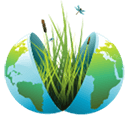
Beanblossom Bottoms Nature Preserve
About
GENERAL INFORMATION
Criteria:
- Listed on more than one “valuable wetland” list by natural resource agencies or nongovernment organizations.
- Protects biological diverse wetland flora, fauna and/or their habitat
- Supports significant numbers of wetland-dependent fauna, such as water birds or fish
The Beanblossom Bottoms Nature Preserve is a 598-acre wetland owned by Sycamore Land Trust, a non-profit organization in Southern Indiana. The nature preserve includes inland shallow fresh marsh and high-quality inland fresh wooded swamp. The land was acquired by Sycamore Land Trust in 1995, and had been farmed previously (in the early 20th century). Beanblossom Bottoms is part of an Audubon Important Bird Area that encompasses over 650 acres and provides habitat for species such as Cerulean Warblers, red-headed woodpeckers, and American Woodcock (http://www.audubon.org/important-bird-areas/beanblossom-bottoms). It also contains a small Great Blue Heron rookery and a bald eagle nest and provides habitat for two endangered species, the Indiana bat and Kirtland’s snake (https://sycamorelandtrust.org/beanblossom-bottoms/). The Restle Unit of the Muscatatuck National Wildlife Refuge and a Wetland Reserve Program-protected wetland adjoin Beanblossom Bottoms, comprising almost 800 acres of land together and providing excellent ecological connectivity. Due to its ecological value, Beanblossom Bottoms has been designated as an Indiana State Nature Preserve by the Indiana Department of Natural Resources (http://www.in.gov/dnr/naturepreserve/files/Bean_Blossom_Bottoms-color.pdf).
In addition to providing ecological connectivity for many bird, mammal, reptile, and plant species, Beanblossom Bottoms provides important recreational and educational benefits to the people of Southern Indiana. An Indiana University graduate and undergraduate class (Wetland Ecology and Management) visits the preserve several times every fall to learn wetland plant species, practice rapid and intensive wetland assessments, perform a hydrogeomorphic assessment of wetland functions, and see an example of a high-quality floodplain forest. The area is also a popular destination for birders. Beanblossom Bottoms would benefit from being designated as a Wetland Treasure to foster public awareness, as it is under-utilized given its quality. It is certainly a top-tier wetland in Southern Indiana, and provides ecological connectivity that is increasingly valuable as development further disrupts our natural areas.
Exemplary Ecosystem Services:
- Maintains ecological connectivity/cohesion
- Recreation (birdwatching, ecotourism)
- Flood storage/mitigation
- Water quality improvement
- Education
CONSERVATION STATUS AND THREATS
Conservation status: State/Province/Regional Protection
Adjacent Land Use: Agricultural (cropland, orchards, greenhouse)
Approximate natural buffer width: > 100 ft
ECOLOGY
Approximate size: 242
General wetland characterization:
- Inland Shallow Fresh Marsh
- Inland Fresh Shrub Swamp
- Inland Fresh Wooded Swamp
Adjacent Water Bod(ies): Stream
Name of body of water: Beanblossom Creek
Surficial Geology: Zipp soils formed in calcareous lacustrine sediments on bottom land and terraces, with slopes ranging from 0 to 2 percent. Bonnie soils formed in acid silty alluvium on flood plains with slopes ranging from 0 to 2 percent. Stendal soils formed in acid silty alluvium on flood plains with slopes ranging from 0 to 2 percent.
If Adjacent to Stream, insert stream order: 3
Soils: Bonnie silt loam, frequently flooded (Fine-silty, mixed, acid, mesic Typic Fluvaquents); Stendal silt loam, frequently flooded (Fine-silty, mixed, acid, mesic Aeric Fluvaquents); Zipp silty clay loam, frequently flooded (Fine, mixed, nonacid, mesic Typic Haplaquepts). Zipp is 80% of the wetland area, and Bonnie and Stendal are each about 10% of the area.
FLORA AND FAUNA
Dominant flora: swamp white oak (Quercus bicolor), pin oak (Quercus paulstris), swamp cottonwood (Populus heterophylla), sycamore (Platanus occidentalis), green ash (Fraxinus pennsylvanica), and silver maple (Acer saccharinum)
Unique flora: lizard’s tail (Saururus cernuus); White turtle-head (Chelone glabra); closed gentian (Gentiana andrewsii)
Dominant fauna: beavers (Castor canadensis), raccoons (Procyon lotor), deer (Odocoileus virginianus)
Rare fauna: Kirtland’s snake (Clonophis kirtlandii), Indiana bat (Myotis sodalis), bald eagle (Haliaeetus leucocephalus)
ADDITIONAL INFORMATION
Wetland Treasure Designation by Sycamore Land Trust
Photo of a flooded forest on the preserve
Carbon Sequestration and Nutrient Accumulation in Floodplain, Depressional and Bog Wetlands of the Old and New Worlds - draft
Beanblossom Bottoms Nature Preserve information sheet
Images



